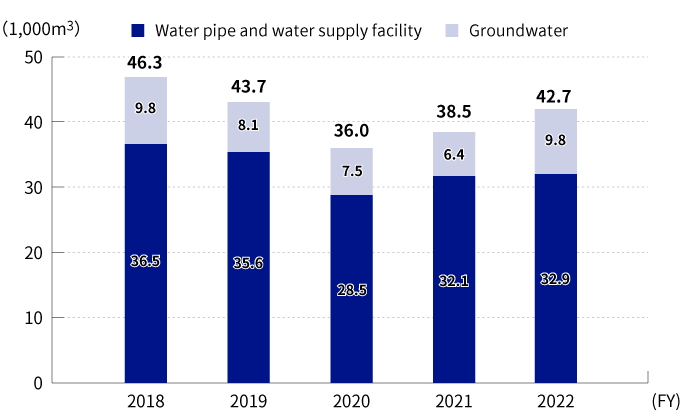Water Use and Management
Basic Concepts
Water resources are not only essential to conducting business but also essential to everyday life and the production of food of the regional community and the maintenance of biodiversity. In the manufacturing of sports equipment, the production of raw materials and the manufacturing process of products have a great impact on water resources. Mizuno puts effort into reducing the amount of water use, including the developing of manufacturing technologies that will allow the reduction of water use.
To play its part in the circulation of water resources responsibly, Mizuno will pay even greater attention to the effluent its manufacturing bases discharge into the sewage and general rivers and also ensure that it complies with laws relating to septic tanks and water quality management.
Water intake by water source [*b]

Water-resource measures taken in supply chains
Since supply chains are expanding globally, water pollution in manufacturing countries is an important issue that needs to be addressed. Mizuno uses the World Resources Institute (WRI)’s Aqueduct, which provides a world atlas that maps data on water risks, to identify current and potential water risks at its offices and factories around the world. A water risk survey has been completed at all 37 Mizuno offices: 18 in Japan (including subsidiary offices) and 19 abroad.
In addition, as part of its CSR procurement audit, Mizuno checks whether its suppliers are properly managing effluent and whether employees have safe access to water.
Future issues to be addressed
- Mizuno will seek to fully grasp the facts of its water use from multiple perspectives, including the current levels of its global water usage and water-related impacts, as well as future water-related impacts on its business activities.
- If a water risk proves to exist, Mizuno will adopt appropriate countermeasures according to the nature of the risk and the social situation.
